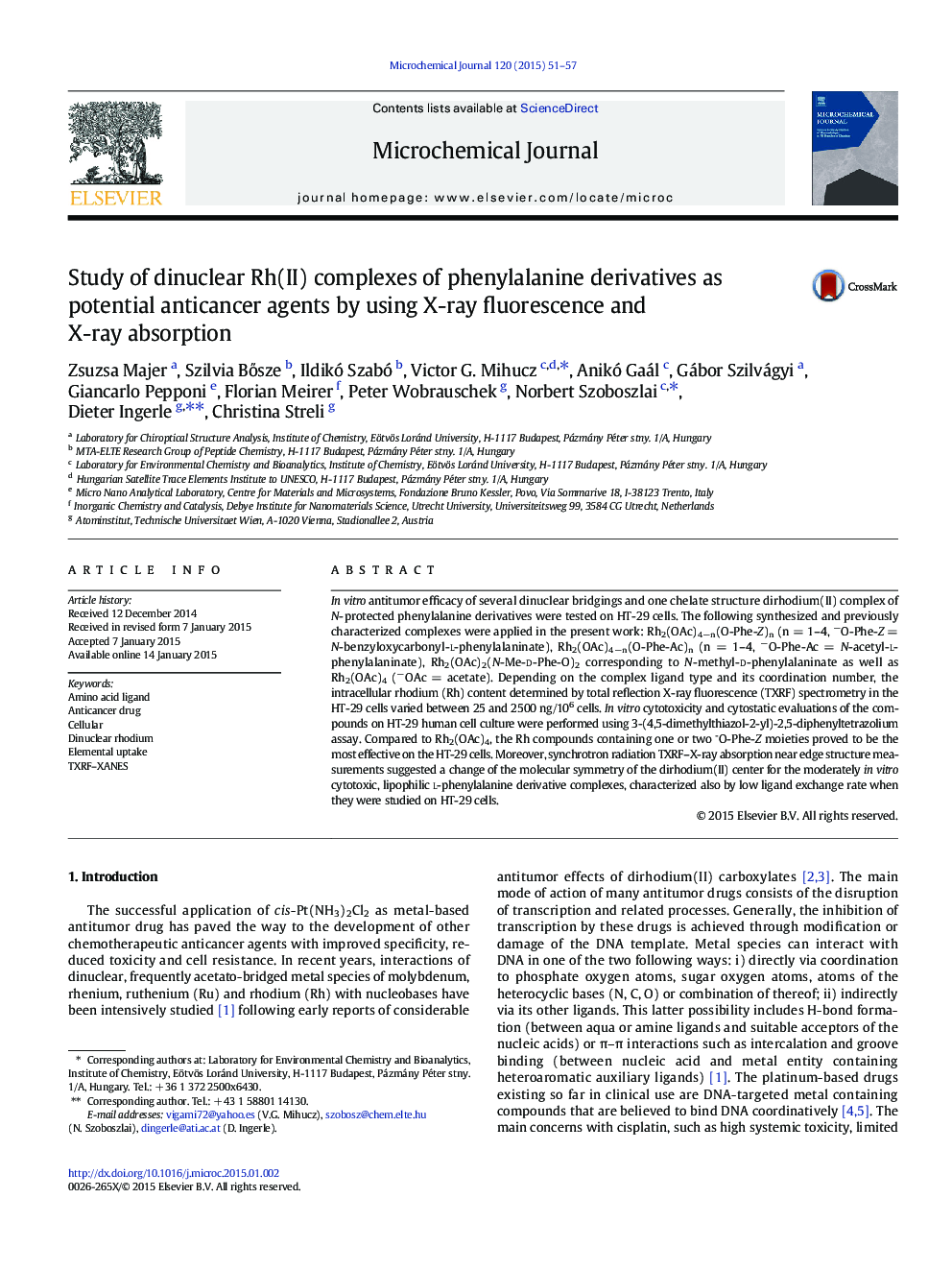| Article ID | Journal | Published Year | Pages | File Type |
|---|---|---|---|---|
| 1227711 | Microchemical Journal | 2015 | 7 Pages |
•In vitro cellular uptake of N-protected phenylalanine dinuclear Rh(II) complexes;•Cellular content of Rh from dinuclear Rh(II) complexes by TXRF;•Influence of number and type of ligands on the in vitro efficacy;•Importance of free axial position of dirhodium core for the in vitro efficacy;•Modified chemical environment of dinuclear Rh(II) center.
In vitro antitumor efficacy of several dinuclear bridgings and one chelate structure dirhodium(II) complex of N-protected phenylalanine derivatives were tested on HT-29 cells. The following synthesized and previously characterized complexes were applied in the present work: Rh2(OAc)4−n(O-Phe-Z)n (n = 1–4, −O-Phe-Z = N-benzyloxycarbonyl-l-phenylalaninate), Rh2(OAc)4−n(O-Phe-Ac)n (n = 1–4, −O-Phe-Ac = N-acetyl-l-phenylalaninate), Rh2(OAc)2(N-Me-D-Phe-O)2 corresponding to N-methyl-d-phenylalaninate as well as Rh2(OAc)4 (−OAc = acetate). Depending on the complex ligand type and its coordination number, the intracellular rhodium (Rh) content determined by total reflection X-ray fluorescence (TXRF) spectrometry in the HT-29 cells varied between 25 and 2500 ng/106 cells. In vitro cytotoxicity and cytostatic evaluations of the compounds on HT-29 human cell culture were performed using 3-(4,5-dimethylthiazol-2-yl)-2,5-diphenyltetrazolium assay. Compared to Rh2(OAc)4, the Rh compounds containing one or two -O-Phe-Z moieties proved to be the most effective on the HT-29 cells. Moreover, synchrotron radiation TXRF–X-ray absorption near edge structure measurements suggested a change of the molecular symmetry of the dirhodium(II) center for the moderately in vitro cytotoxic, lipophilic l-phenylalanine derivative complexes, characterized also by low ligand exchange rate when they were studied on HT-29 cells.
